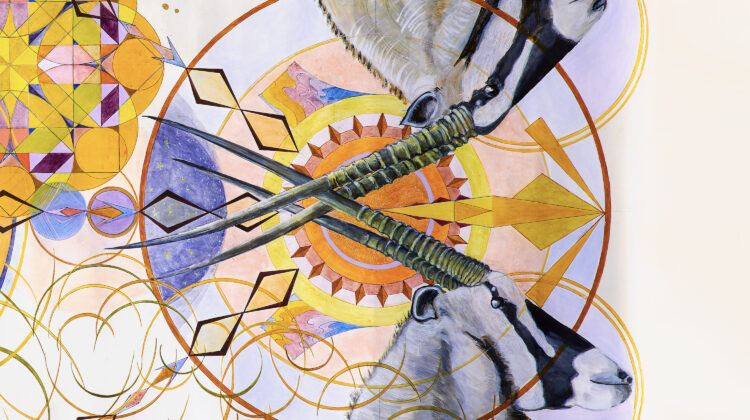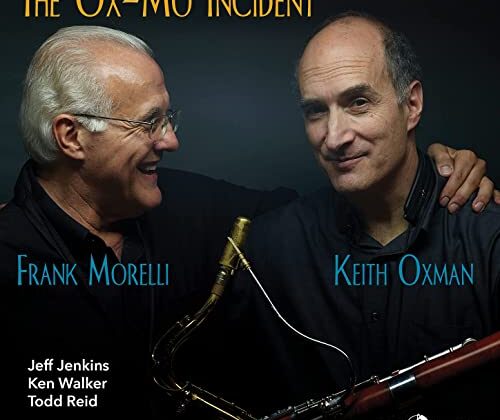Chiaroscuro: illumination and darkness. Saxophonist Noah Preminger has always explored sonic contrasts of brightness and shadows to explore human emotions—not to the rigid extreme of tenebrism, but instead, through investigations of the shades in between.
Ever since Preminger released his first album, Dry Bridge Road, soon after he graduated from the New England Conservatory of Music, he has deepened his expressions of the human spirit by communicating musically the complexity that can exist in its gradual shifting between extremes. Preminger not only has always understood, but he also has felt these oppositions within humanity.
After Dry Bridge Road was available to the public, Preminger said, “There’s a balance between light and dark that I like, plus a special kind of energy.” This understanding seems to have been an aesthetic element of Preminger’s from the beginning of his jazz career, as if it were embedded in his personality.
Preminger’s personality is one of contrasts too.
At first, the compassion expressed so eloquently in his performances doesn’t seem to be consistent with his competitive nature in sports like skydiving, boxing, skiing, and golf. Even though Preminger’s musical activities appear to be discordant with those of his personal life, he reconciles that impression by saying, “Taking risks in life helps you take risks in art. Going to the edge can be exhilarating. You master the technique so that you don’t have to think about it.”
This risk-taking suggests that Preminger is, and always has been, a unique voice on the tenor saxophone, even as he has been thoroughly immersed in the instrument’s jazz history.
Preminger’s most recent album, Ballads, confirms the warmth and beauty of his tone on the tenor sax as he intentionally investigates the flickering between the dark and the light—a traditional artistic theme.
But in addition to the effectiveness of using aesthetic contrasts, the tenor sax’s (and the trombone’s) suggestions of the human voice have led the instruments’ artists to gravitate toward the humanity, concision, universality, and beauty of the ballad.
Miles Davis said, “Don’t worry about playing a lot of notes. Just find one pretty one.” Ornette Coleman: “Jazz is the only music in which the same note can be played night after night but differently each time.” Or Charles Mingus: “Making the simple complicated is commonplace; making the complicated simple, awesomely simple, that’s creativity.”
That’s the ballad.
Translating the complexities of human emotions into a simple melody achieves instant recognition by the heart.
Preminger’s talent evokes deeply felt emotions through the melodies of Ballads.
The first track on the album presents a little-known composition of Stan Getz’s, “Stan’s Mood,” from side B of the 1949 Savoy single by the Stan Getz All-Stars. Getz not only appreciated the beauty of simplicity and the infinite possibilities of a single note too. He also built the warmth of his tone upon the inherent humanity of the tenor sax’s sound. Getz believed that “the saxophone is the translation of the human voice. All you can do is play melody. No matter how complicated it gets, it’s still a melody.”
Preminger intuitively grasps Getz’s concepts. He believes also that “music is about emotion.”
And so, Preminger is an appropriate musician to interpret Getz’s music. Preminger personalizes “Stan’s Mood” with his now-signature style that encompasses an evenness of volume, haunting middle-register presentation of the melody, graceful sustains of the initial notes, and glides into upper registers for improvisation before drifting down to the instrument’s lower tones.
The musicians that Preminger chose for his quartet help elucidate the song’s depth of feeling that is reminiscent of the original recording. Expanding upon Duke Jordan’s original work, pianist Julian Shore accompanies Preminger with sustained block chords and ringing fills during the rests, not to mention his eloquent solo. At 2:47, their quartet plays in unison the song’s signature phrase before its ending. Throughout each track, the integrity, the mutually responsive cohesion, and the seasoned musicianship of the members of the quartet join to create a single statement attuned to universal emotions.
Once again reconciling opposites, Preminger moves from Getz to Sun Kil Moon’s “Carry Me Ohio.” Also at a leisurely pace, “Carry Me Ohio’s” melancholy feel provides Preminger this time with lyrics that verbalize the composer’s, Mark Kozelek’s, intentions, even as their meanings remain open to interpretation. (For example, is the regret that the singer feels for the “she” that he left behind or is “she” the personification of the state itself, where Kozelek was born?) In any case, in a little less than four minutes “Carry Me Ohio” provides Preminger with yet another burnished facet to include on the album, this time from a theme of haunting reminiscence. Played with introspective rumination, Preminger captures the mood of the piece, each note a sustained, lustrous reference to irredeemable loss and contrition.
With “Unfair World,” Preminger moves into his own compositions of comparable emotions, the fortunate result of pianist Frank Carlberg’s encouragement for Preminger “to write some music every day.” Developed with a deliberative dark tone and a largo tempo, “Unfair World” voices its foreboding message with a calm rhythm of quarter notes underpinning the originality of its harmonic structure. Optimism does break through the despair when Shore improvises a coruscating upper-treble-clef solo based on “Unfair World’s” chord structure.
The pace of Preminger’s “In Our 20s” is equally slow and thoughtful, marked by his always diligent attention to a comforting tone, even as he heightens the tension by rising into upper registers. However, this composition provides slightly more percussive movement, at first introduced by drummer Allan Mednard’s thump-and-pop pattern of two pitches. Then Shore orchestrates the broad harmonies, melodic hints, and off-the-beat rhythm as a foundation for Preminger’s improvisation.
The next track, “Democracy,” revisits the theme of Preminger’s landmark album of social concerns arising from the 2016 election. Indeed, Preminger released Meditations on Freedom presciently on inauguration day, 2017, as a musical protest. The album’s titles like “The 99 Percent,” “Mother Earth,” and “Broken Treaties” unfortunately remain just as relevant today.
Always a storyteller using the language of music, Preminger’s “Democracy,” also meditative rather than exclamatory, deftly integrates the forms of a ballad’s narrative concision and of a protest song’s outreach with the album’s overriding characteristic of elegance. Instead of musically shouting, Preminger invites dialogue through music. He believes that “people respond well to good art and positive messages. If you’re positive, change is going to come.” His attention to phrasing and his masterful crafting of an unexpectedly luminous ballad are reminders of his influence by master tenor saxophonists like Lester Young and John Coltrane.
Remarkably consistent in his concept, Preminger’s quartet develops minor-keyed “Pneu” into a measured haunting performance, its graceful ambling accompaniment exuding shadowy moods through evenly paced lower-register quarter notes, oblique harmonies, Mednard’s soft malleting, bassist Kim Cass’s faster-paced counter melodies, and Preminger’s exquisite tonality.
As if a segue from “Pneu” (for a similar tempo and a similar atmosphere continue, although the key changes from minor to major), Preminger concludes the album, initially as a duo with Cass, with George Gershwin’s song, “Someone to Watch over Me,” which, ironically, Gershwin composed during the Roaring Twenties. Then, Shore and Mednard join in with an expansion of the harmonic and percussive sensitivity that Preminger applies throughout Ballads.
“Sound always comes first with me,” said Preminger. Accordingly, he has teamed with a new label, Chill Tone Records, which also strives to produce high sound quality for its roster of musicians. The success of this combination of artistic vision and technical distinction is evident by capturing the musicians’ understated passion on Ballads.
Artist’s Web Site: noahpreminger.com
Label’s Web Site: noahpreminger.bandcamp.com












